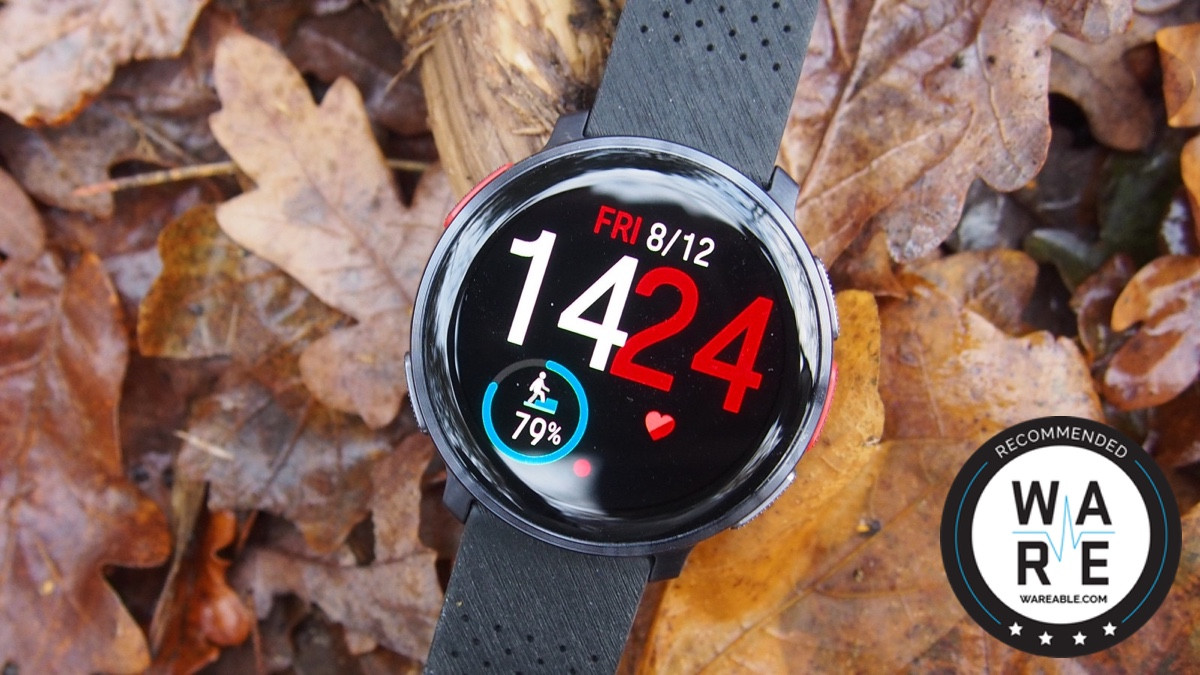
- Lovely AMOLED screen
- Performance boost means smoother software
- Same great core multisports tracking
- Optical heart tracking accuracy still not fantastic
- Doesn't match Garmin for smartwatch features
- Pricier than 965 and Suunto Race (in US)
The Polar Vantage V3 is a big upgrade, and it finally brings the top features of rival multisport watches to make it a premium contender.
It brings free offline maps, dual-band GPS, an AMOLED screen, and a general performance boost making the Vantage V3 better equipped to match the competition.
But is the Vantage 3 a premium multisport watch option?
Here’s our verdict.
Price and competition
The Polar Vantage V3 is Polar’s flagship, which means you can expect to pay big bucks for it.
At $599/£519, it sits against watches like the Garmin Forerunner 965 (£599.99/$599.99) and the Suunto Race (£389/$449), two fellow AMOLED-toting top-end sports watches.
From a US pricing perspective, that means the Vantage V3 costs more than both the Forerunner 965 and the Race. It’s a different story in the UK where Polar's watch comes in cheaper, though the Suunto Race remains significantly cheaper than both Garmin and Polar’s flagship watches.
Design and display
Wareable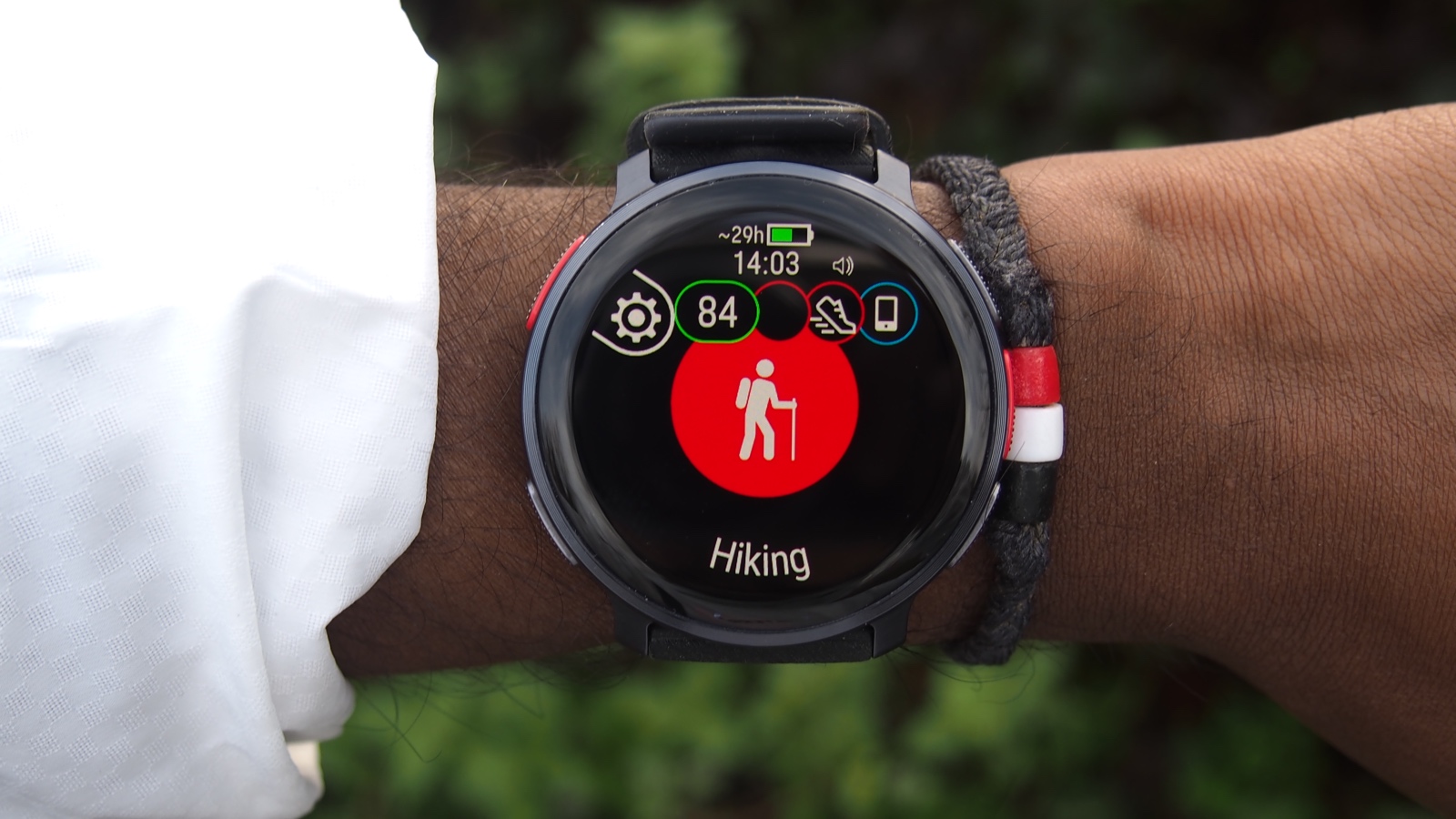
The Vantage V3 is Polar's best-looking sports watch, and the new AMOLED display plays a big part in that.
It’s a crisp, colorful, 1.39-inch, 454 x 454 resolution screen that feels like a big step up from the 1.2-inch, 240 x 240 memory pixel display featured on the Vantage V2. There's not too much bezel either, and it's a good-looking premium watch.
Screen visibility is good, but you do have the option to tinker with the screen brightness in the watch settings.
Interacting with the screen has notably improved as well. We criticized the Vantage V2 for being laggy and Polar says the CPU on the V3 is 129% faster – and it's done the job.
The screen can be set to always-on but the raise-to-wake gesture support works well enough that trading a 24/7 display for more battery felt the right decision for us.
Wareable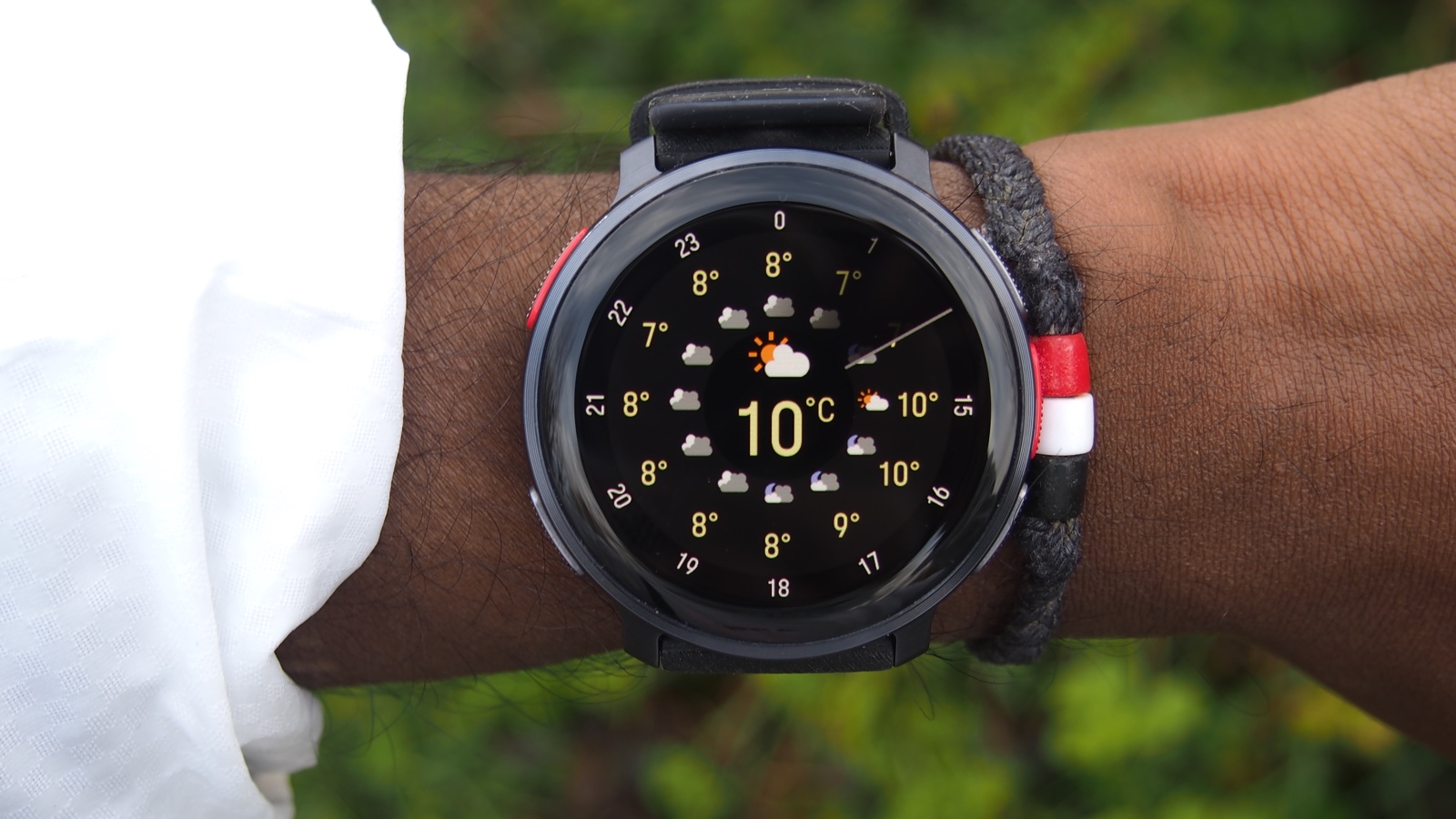
Polar sticks with the nice, textured physical buttons it included on the V2. They’re nice and wide, making the chances of you missing a button pretty slim. They’re stuck to a 47mm case, so that’s the same as the case on the V2. That case is chunkier however, moving from a 13mm thick case to a 14.5mm one, though it doesn’t make a difference on what it’s like to live with.
The strap is an interesting one. It’s a silicone kind that doesn’t like your typical sports strap as Polar tries to dress this one up, at least from the outside, to better compliment that aluminum case. Our first few days with it were memorable for the wrong reasons. It felt like it was pulling a little at the hairs on our wrists, but that issue has disappeared over time.
Wareable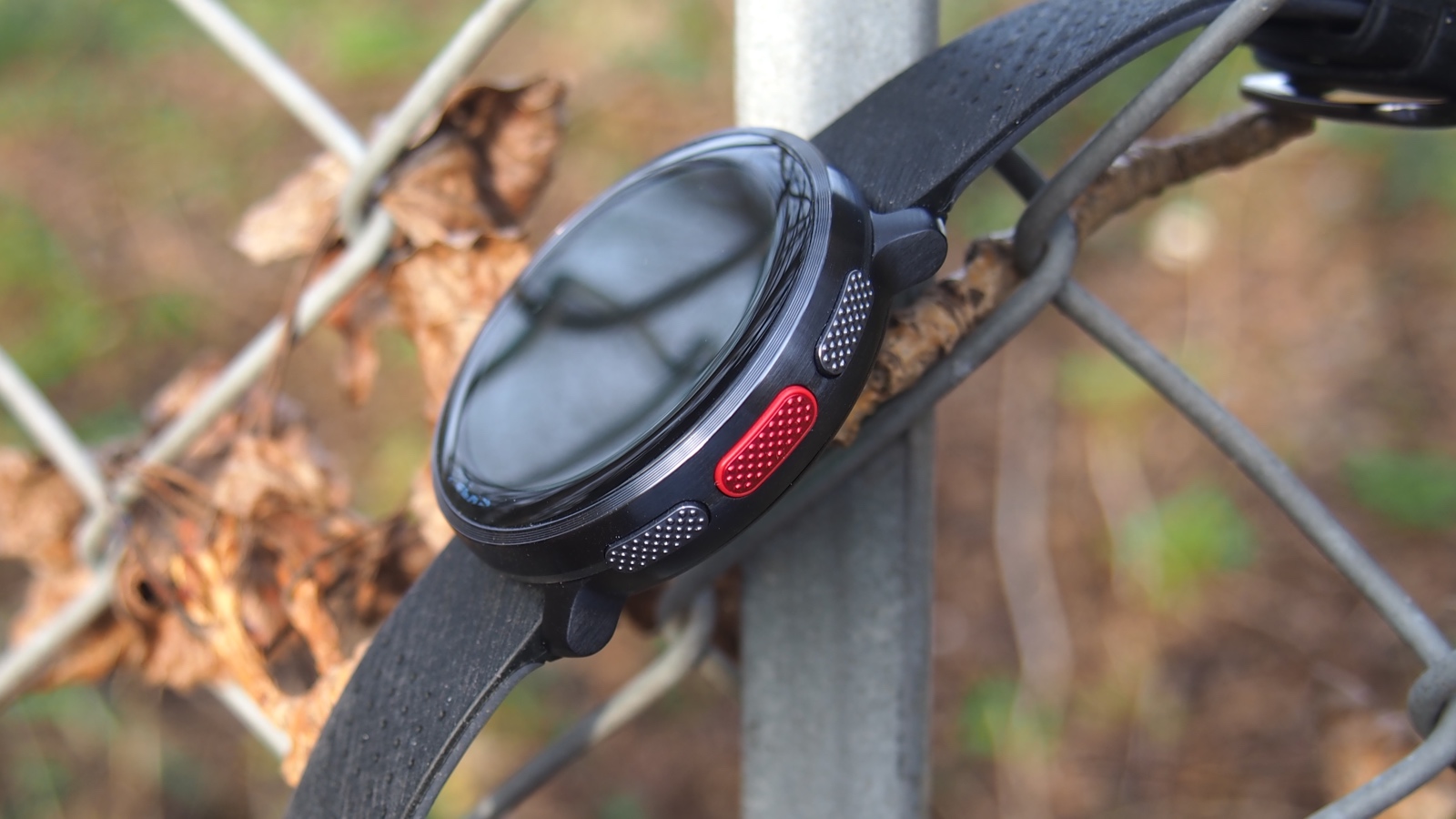
It’s happy to live in the water too, though Polar has downgraded the waterproof rating, going from a WR100 (up to 100 meters depth) rated design to a WR50 (up to 50 meters depth) one. If you’re planning to take it swimming and open water swimming, that level of protection should still be good enough for most and matches most watches at this price for protection against water.
Battery life
Wareable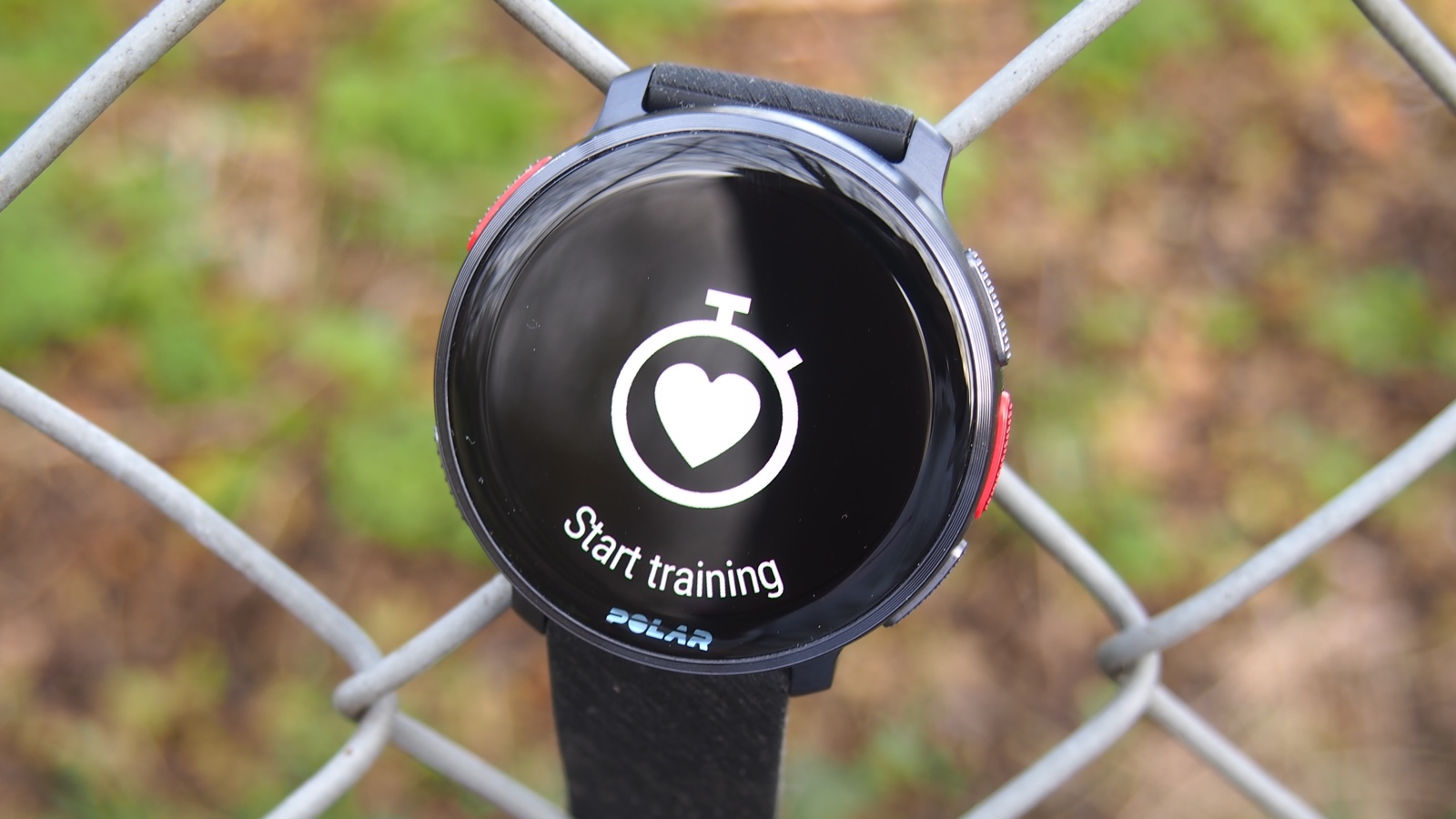
AMOLED screens suck more power compared to the screens we’ve had to deal with on sports watches previously. In Polar’s case, the battery performance on the Vantage V2 wasn’t all that great, even without an AMOLED panel to power, so it’s good to see that things have been improved.
We used the Vantage V3 with a mix of having the screen set to always-on and also using the raise-to-wake gesture support. We had notifications enabled, used it to track sleep, and used the top dual-frequency GPS mode.
With the screen on 24/7, the battery does invariably drain quicker, but it's not as bad as the Ignite 3, Polar’s first AMOLED watch, which mustered up a couple of days. The V3 can go further than that and can make it to 5 days, depending on how regularly you're tracking and what GPS mode you’re using as well.
If you can live without the screen on at all times, we found even with regular GPS use, the V3 can go for a week or longer. If you’re tracking training every day, it will last a week. It's a tad shy of Polar’s claim of 12 days – and Forerunner 965/Fenix 7 longevity – but still very usable.
The other good stuff is the GPS battery life.
Polar promises 61 hours of GPS battery life when using the single-frequency GPS mode. That drops to 47 hours when using the dual frequency mode. For context, the Forerunner 965 promises 19 hours with its dual-band mode in use.
Polar was certainly more frugal than the Forerunner 965 in our testing. We found a 7% drop on the Garmin compared to 3% on the Polar during 90 of outdoor running tracked with dual-band GNSS.
Training features
Wareable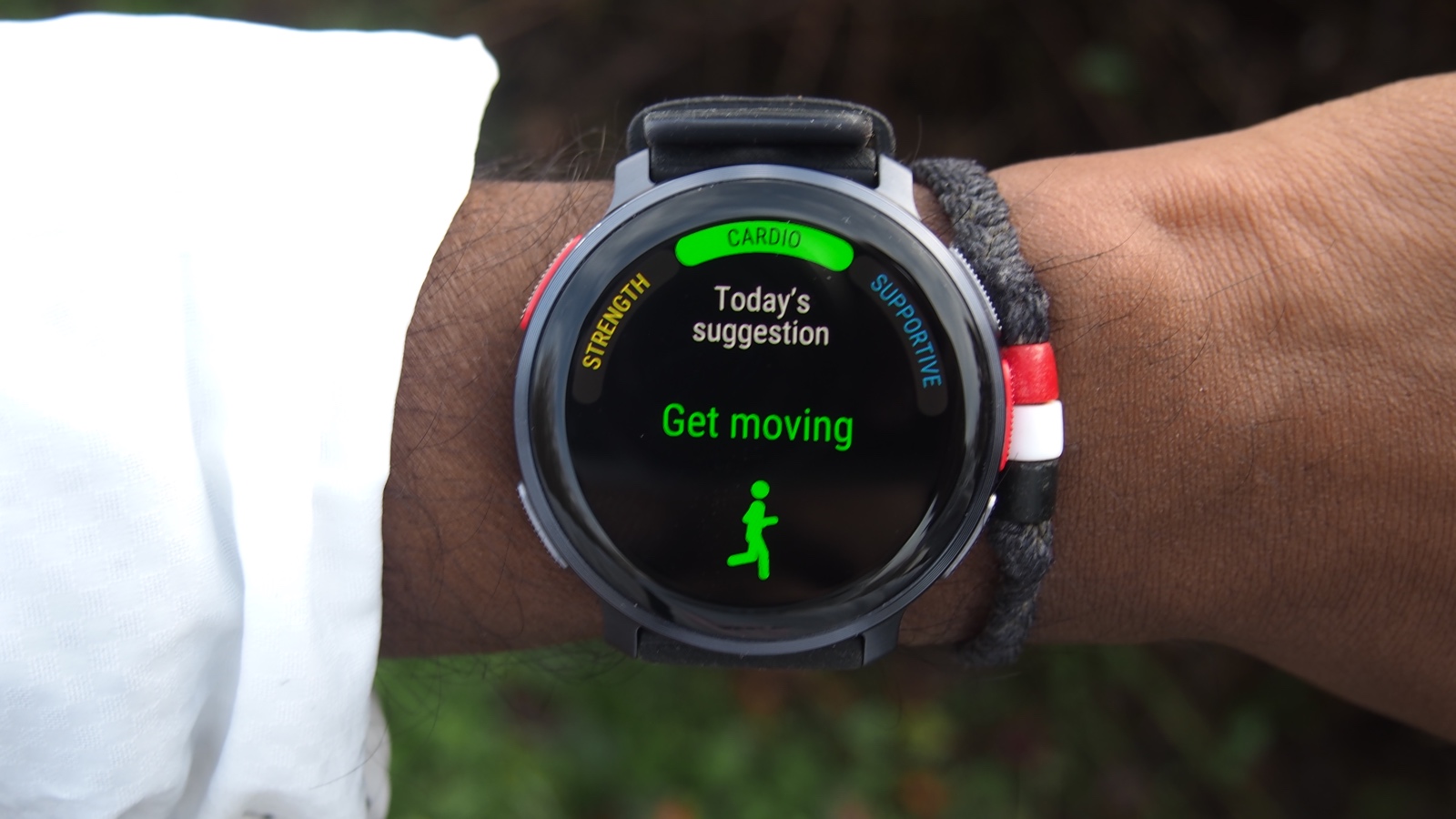
The Polar Vantage V3 offers a dizzying amount of training and training analysis features. Most were already present on the V2 and the likes of Training Load Pro, and Recovery Pro insights. FitSpark suggested workouts and FuelWise fuelling reminders are all still present.
There are some extras here too. Polar has added its walking test so new runners can assess fitness without going running. Along with the non-medical ECG tests, you'll also find the ability to measure SpO2 levels showing your blood oxygen level percentage along with your baseline and current altitude.
Wareable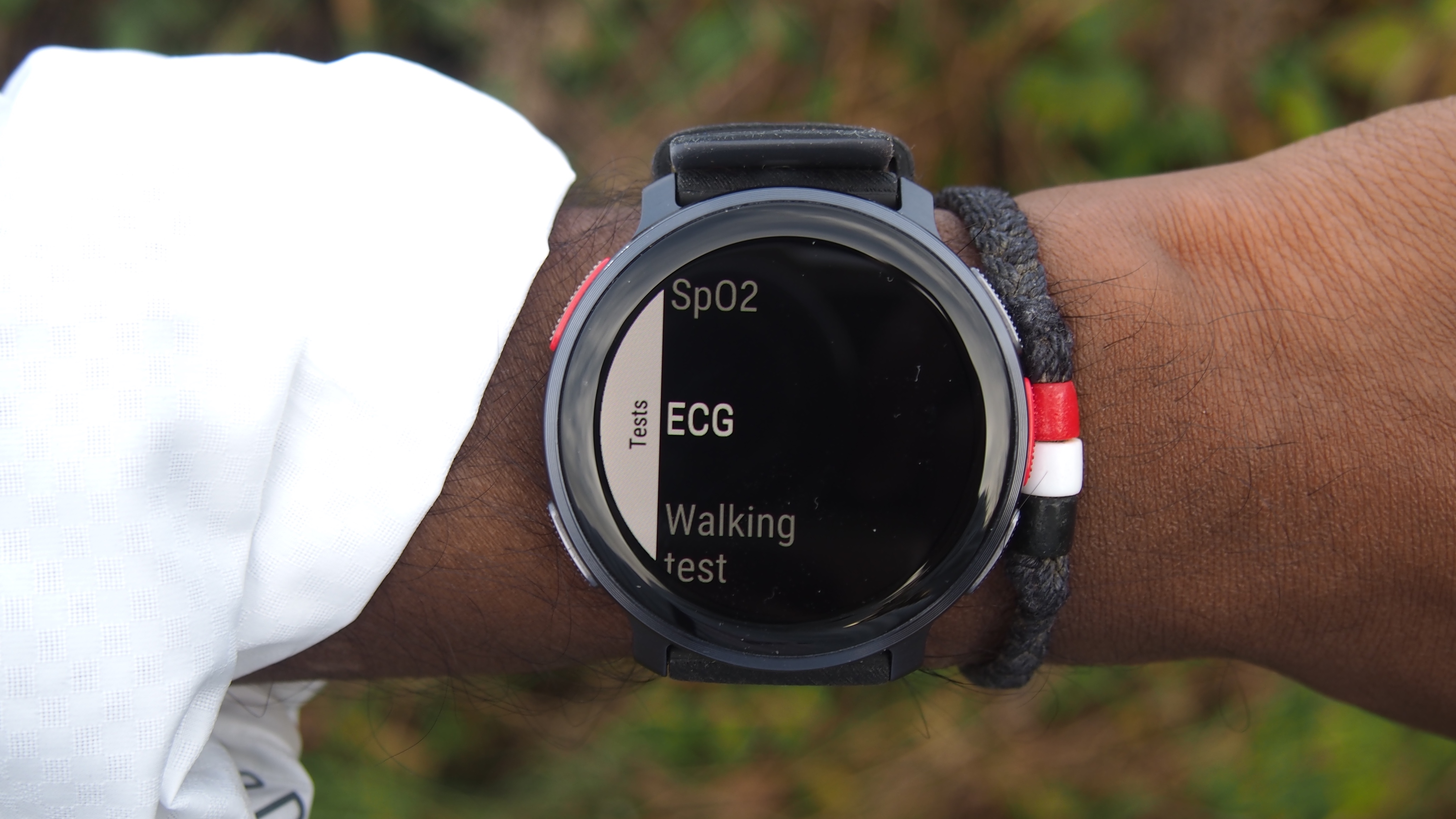
We've compared readings with a dedicated pulse oximeter and found that there was a 5% difference in readings, and on occasion, the Vantage V3 told us that SpO2 levels were below normal. So this isn't a great result.
The Vantage V3 also gains voice guidance, but this simply gives you updates on performance through your headphones, so nothing particularly exciting.
Its Work-Rest-Guide is designed to help you know in real-time when to start a new set during a workout based on heart rate, which is another feature brought over from its Ignite 3 watch.
Wareable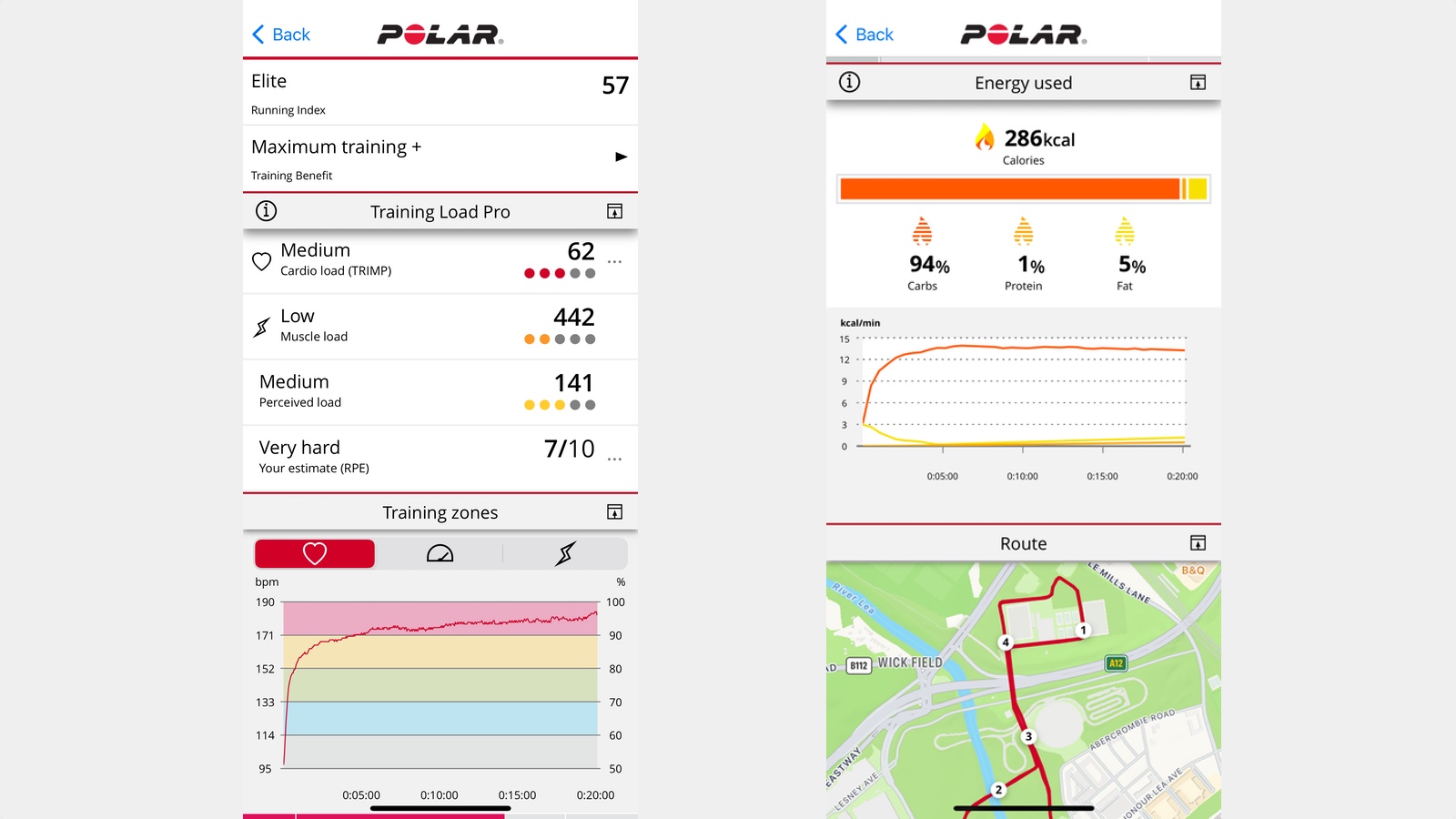
Collectively, Polar's approach to training and analysis can feel a touch overwhelming.
From the watch, there are screens dedicated to aspects like training volume for the week, and cardio load status, where we can see if fitness levels are going up or down.
Venture into the app and the presentation feels busy. There are muscle load analysis, perceived load, and RPE estimates. There's just a lot here. We're data lovers, but it feels like this needs to be harnessed into something a little more meaningful. A lot of this is found on Garmin, but it's just less overwhelming.
However, the FitSpark suggested workouts are easy to understand – as is the Running Index.
Heart rate accuracy
Wareable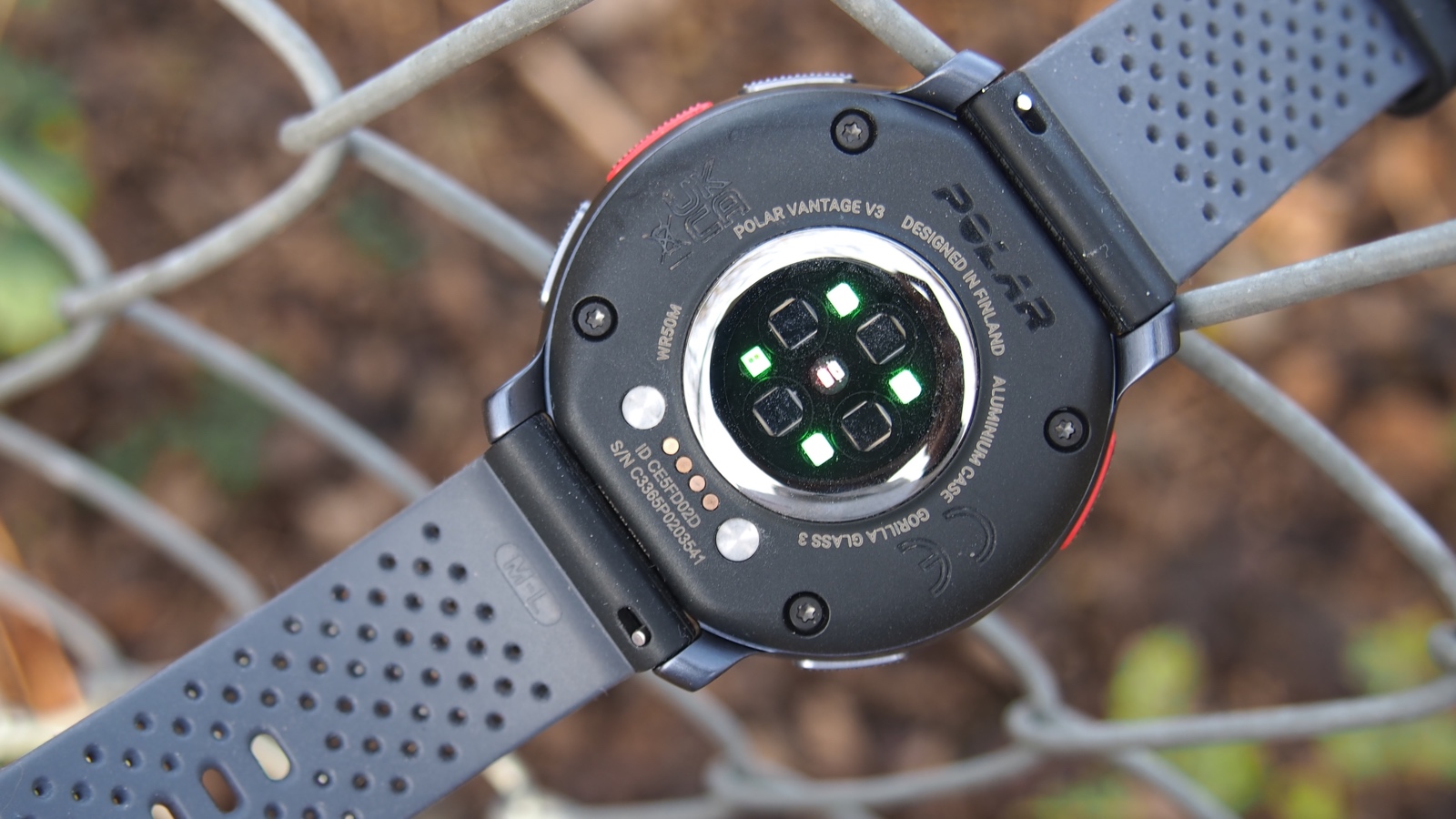
Polar has also introduced Elixr, a new version of its optical heart rate sensor array – as well as an ECG sensor to firm up its heart rate tracking credentials.
But I had mixed results – particularly when tracking my heart during exercise.
Wareable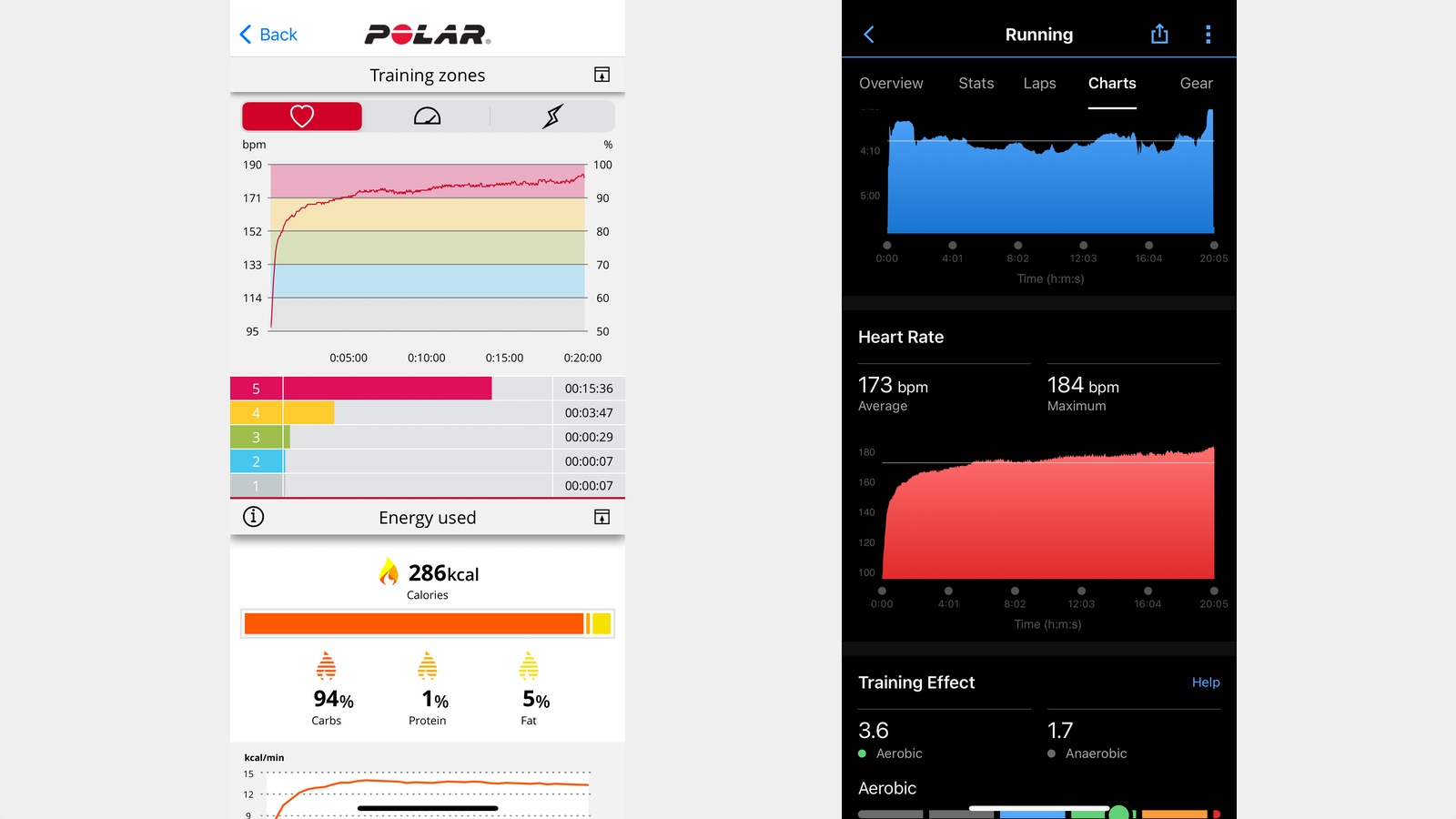
I've used it for all of my runs and indoor workouts, including some races – but there's a mixed bag when placed against Polar's own H10 heart rate monitor.
For steady-paced workouts the V3 came up a little short against two heart rate monitor chest straps (screens below), including Polar's own Polar H10 chest strap monitor.
Typically, we found both average and maximum heart rate readings never really matched up. They weren't wildly off, but they were off and didn't feel too different from what we experienced on the Vantage V2.
As you can see from the graph below, the Polar Vantage V3 dips off near the end of the run, while the Polar H10 (with Garmin Forerunner 965) doesn't. And that caused a large discrepancy in the average
Wareable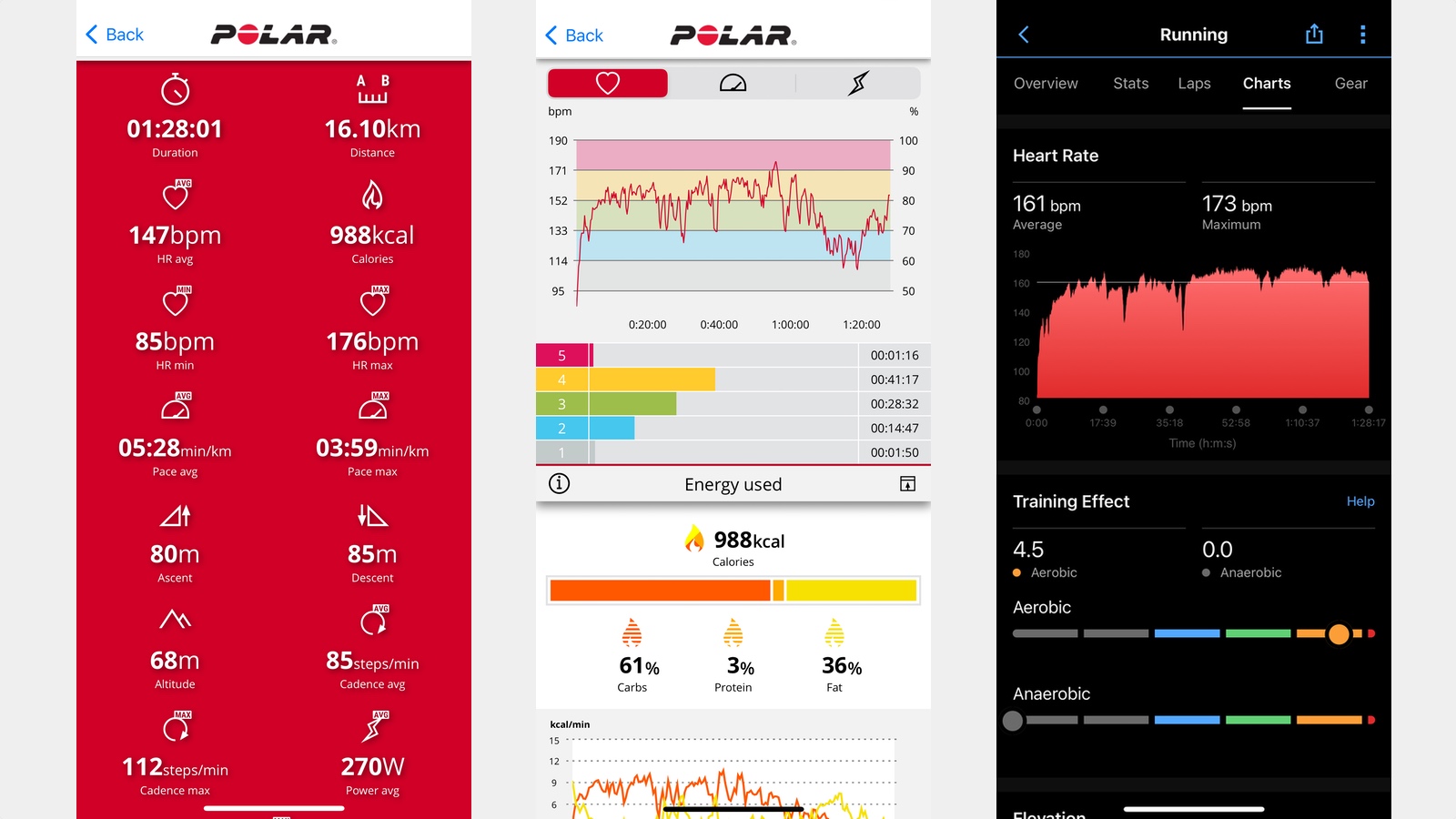
The addition of the ECG feels a lot like the introduction of the same feature on the Coros Vertix 2.
This isn't a sensor designed for detecting Afib, like the Apple Watch or Samsung Galaxy Watch, but allows you to perform Polar's Orthostatic test, which typically requires an external heart rate monitor to make use of it.
The Polar Orthostatic Test assesses your body's ability to recover from exercise and identify potential signs of overtraining. It is based on the measurement of heart rate variability (HRV), which is a measure of the variation in the time between heartbeats – and this is captured on the spot using ECG.
It's a nice feature – although this is something the likes of Whoop and Garmin's Training Readiness feature on Forerunner 965 aim to do automatically. So doing it manually feels a bit like effort – even if the ECG reading should make it more accurate.
We did a little comparison with the ECG sensor on the Apple Watch Ultra 2's ECG sensor and found the accuracy of the V3 sensor to be nicely in line.
GPS accuracy
Wareable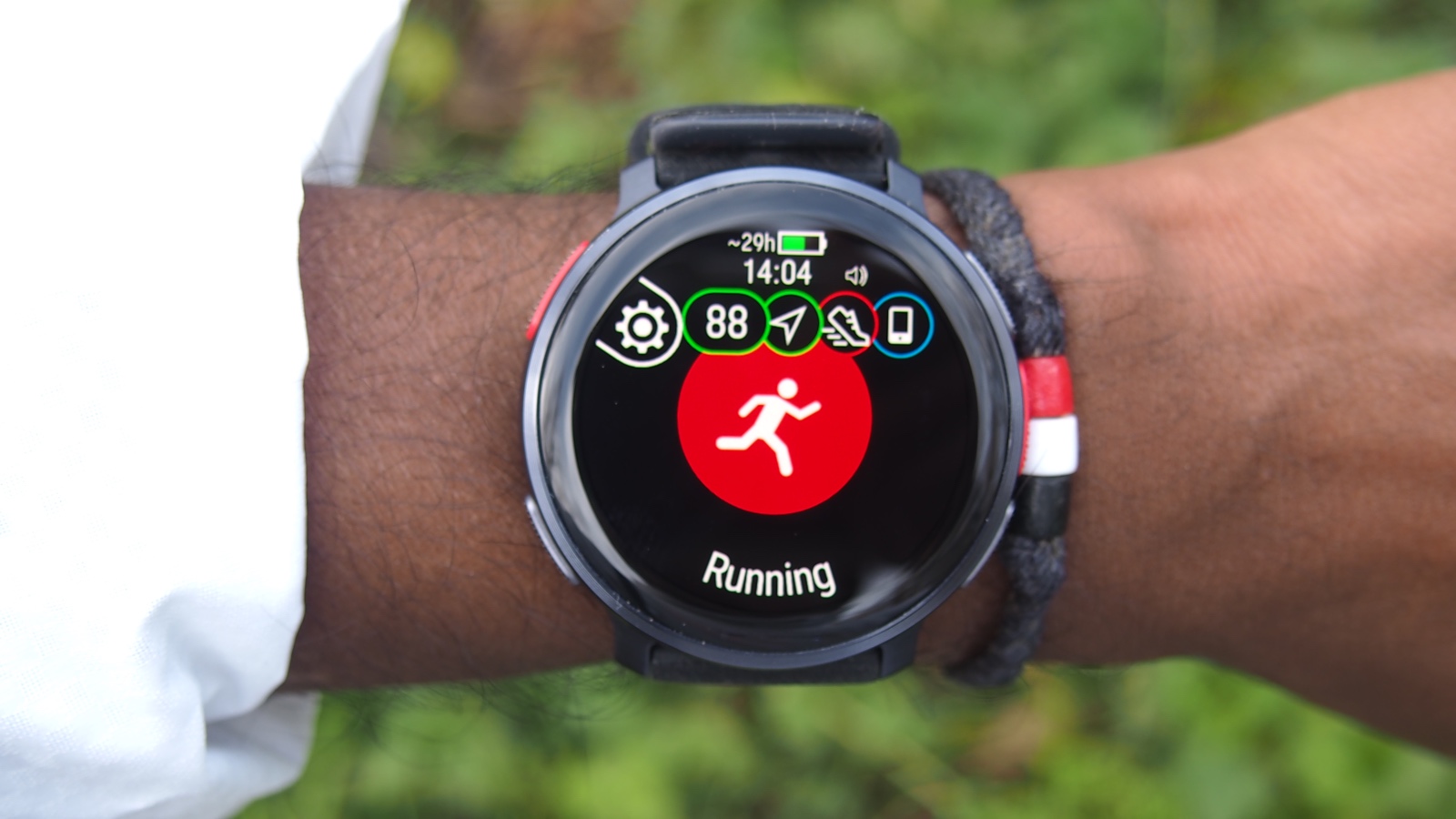
The sports tracking is very good on the Vantage V3 just like it was on the Vantage V2. We've taken it running, pool swimming, spent some general gym time with it, and jumped on an indoor bike and the performance on the whole has been solid.
GPS performance wasn't necessarily a big problem on the Vantage V2, but adding dual-band GPS keeps it up with the competition. This is the ability to tap into multiple frequencies from supported satellite systems to improve outdoor tracking accuracy, particularly when you're working out near tall buildings, heavily wooded areas, and in adverse weather.
Wareable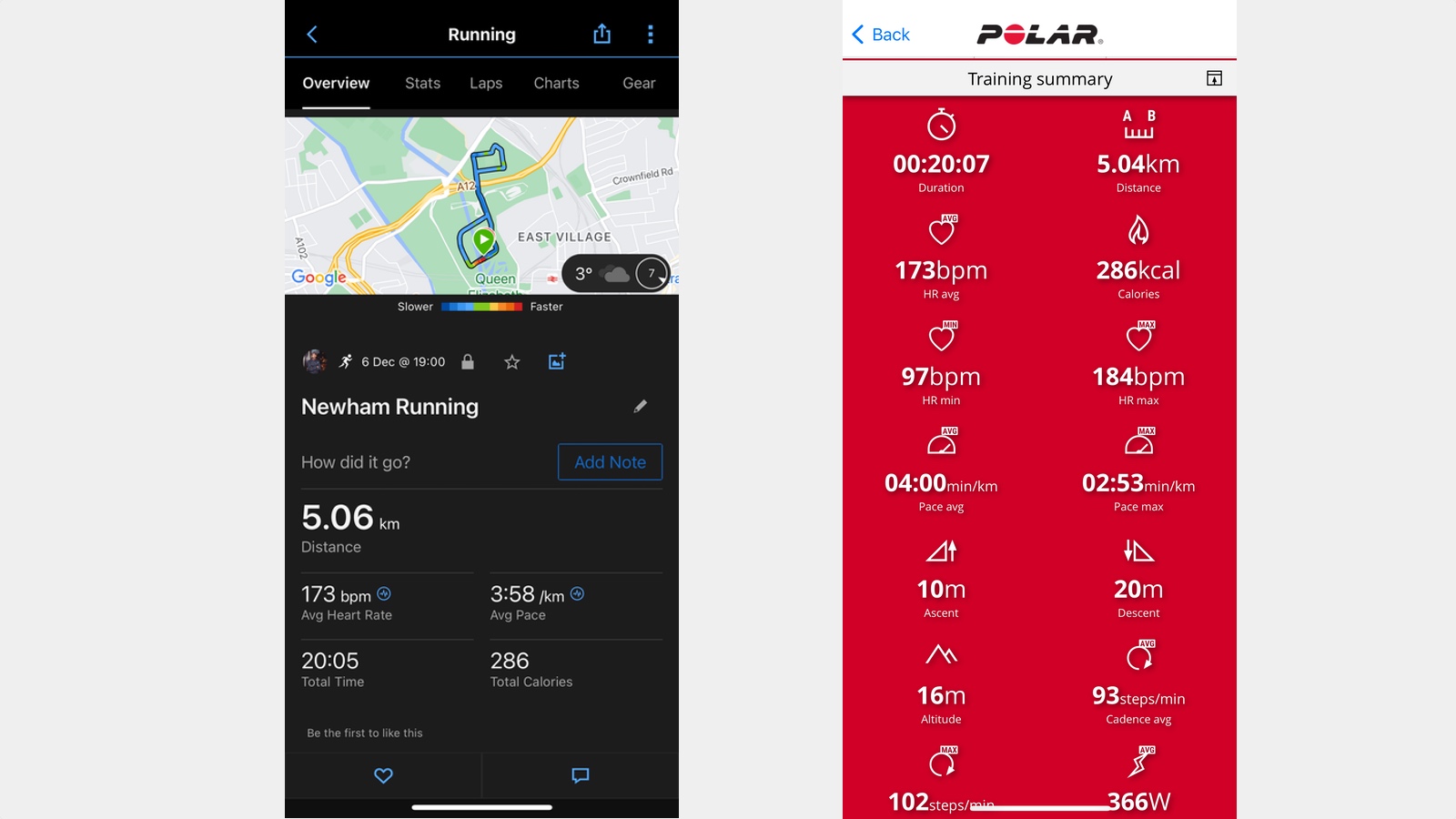
Apple, Garmin, and the likes of Amazfit and Huawei went dual-band before Polar did. Polar made an interesting call to add it to the Ignite 3 before any of its Vantage or Pacer series watches. Now it's on the V3, and if you care about having the best GPS accuracy, this gives you the performance boost you crave.
Wareable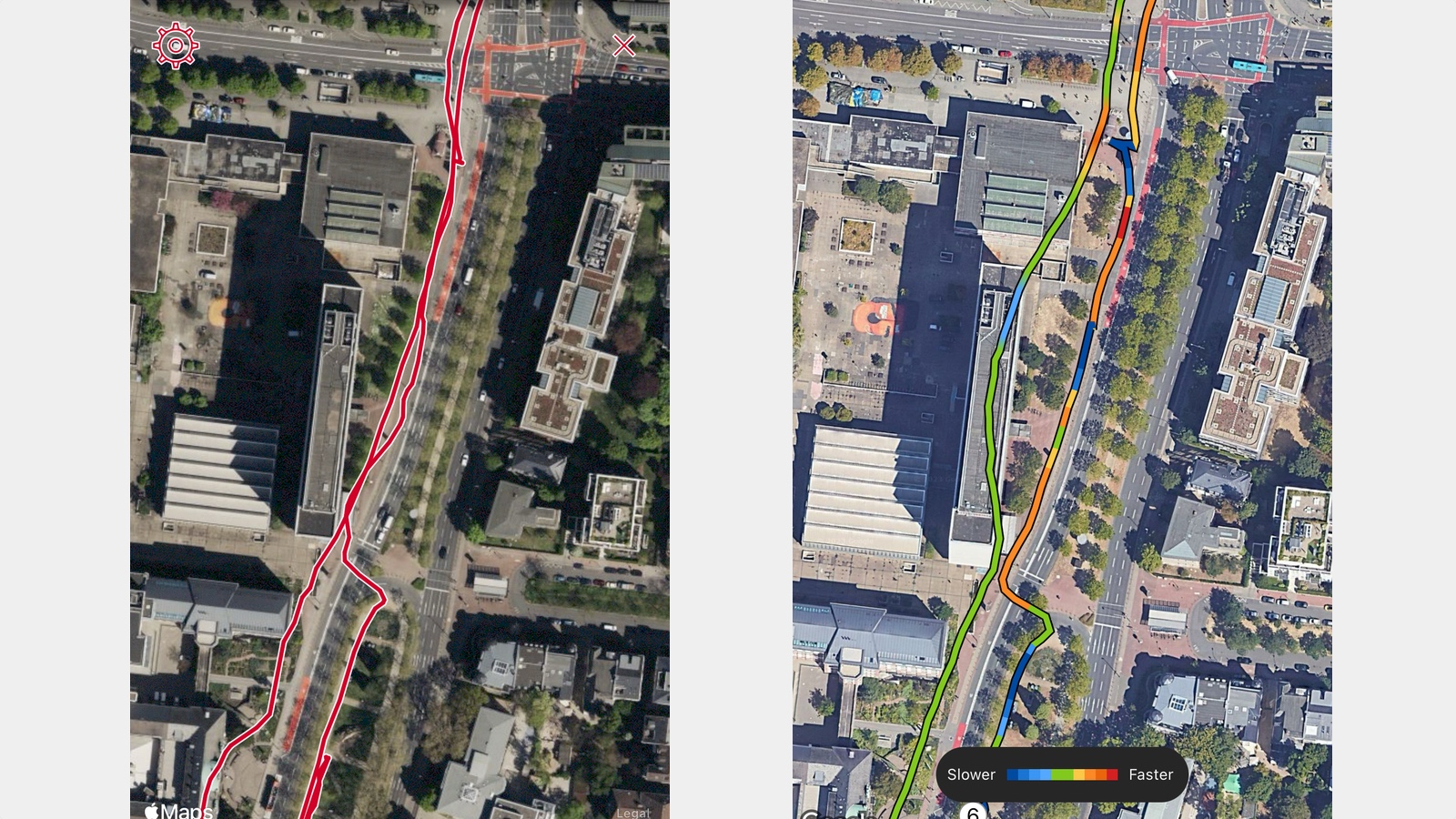
We've been using it against similar support on the Garmin Forerunner 965 and the Suunto Race. Both Garmin and Suunto have offered some of the best dual-band GPS accuracy we've seen on a watch.
The Polar Vantage V3 fared well against those watches for tracking accuracy and even performed a little more reliably than Garmin in some scenarios.
The above screen is from a run in the centre of Frankfurt where there are a lot of towering buildings. The Polar performed a little better than the Garmin on that occasion.
In general, there seems to be a touch more smoothing in places with the Polar when you look closer at the tracked routes, but ultimately the GPS performance here is very good.
Mapping and navigation
Wareable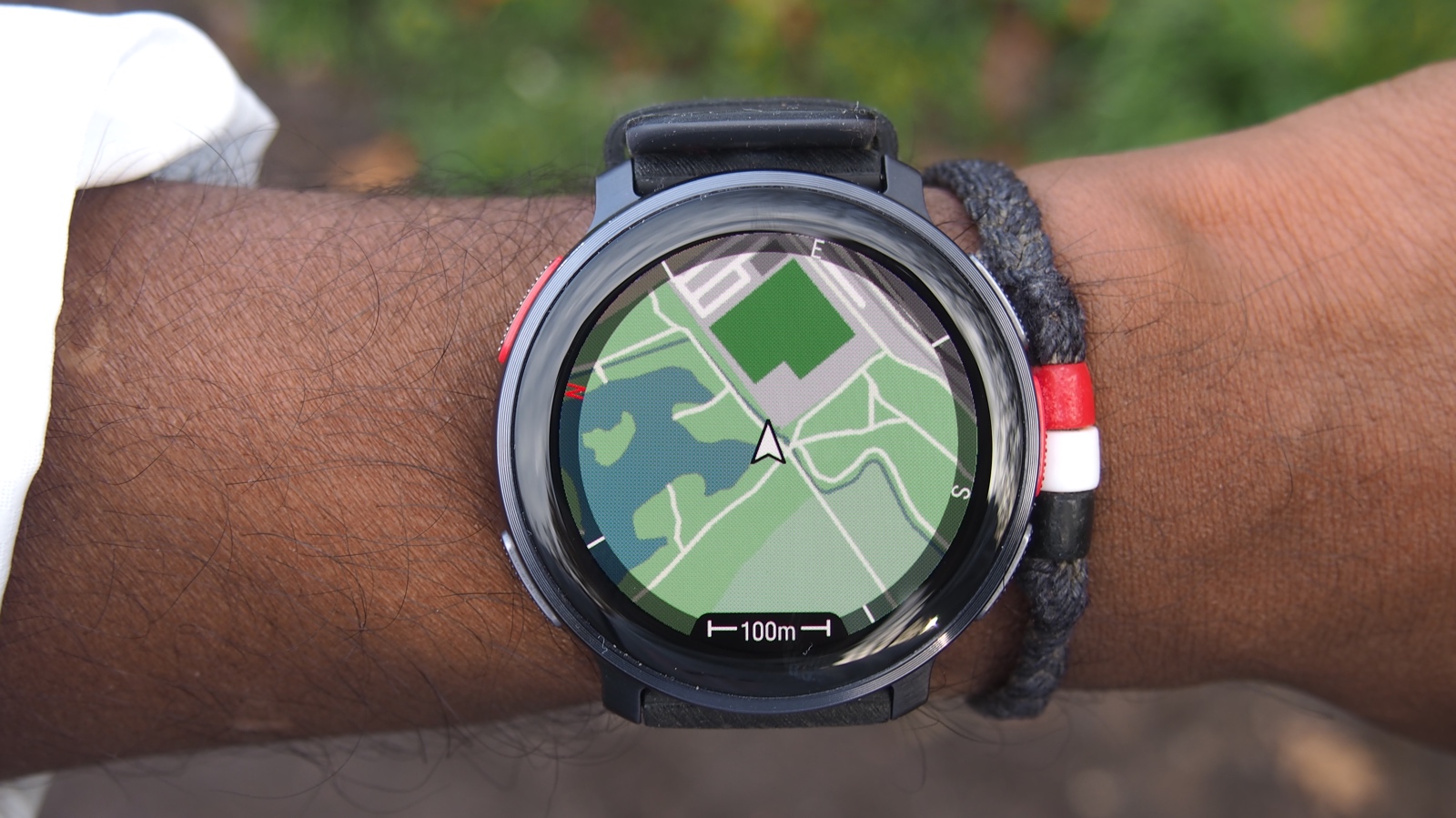
Polar's journey to making its watches feel more like truly outdoor watches started with the Grit X. That's when it added features like route guidance and turn-by-turn navigation through the third-party app Komoot. Those features are present on the Vantage V3 and now Polar is also taking some of those features into its own hands.
Most notably, the addition of free topographic maps, which can only be downloaded from Polar's Flow web platform, and plugging your watch into a computer as opposed to doing it through its smartphone Flow app. Polar offers a portion of its 32GB onboard storage for mapping.
The mapping support isn't as feature-rich as Garmin's but it's a big plus for Polar now. Maps are nice to view on that AMOLED screen and maps are nicely detailed but you have to use the physical buttons to zoom in and out of maps.
While Komoot is still your route to guidance support, Polar does offer its Back to Start option. If you want to upload routes you can do that via Komoot – and GPX and TCX file formats via the Polar Flow web app.
This is a good start for Polar's foray into offering full maps with a clear scope to hopefully add native turn-by-turn support – which is sadly lacking.
Sleep and fitness tracking
Wareable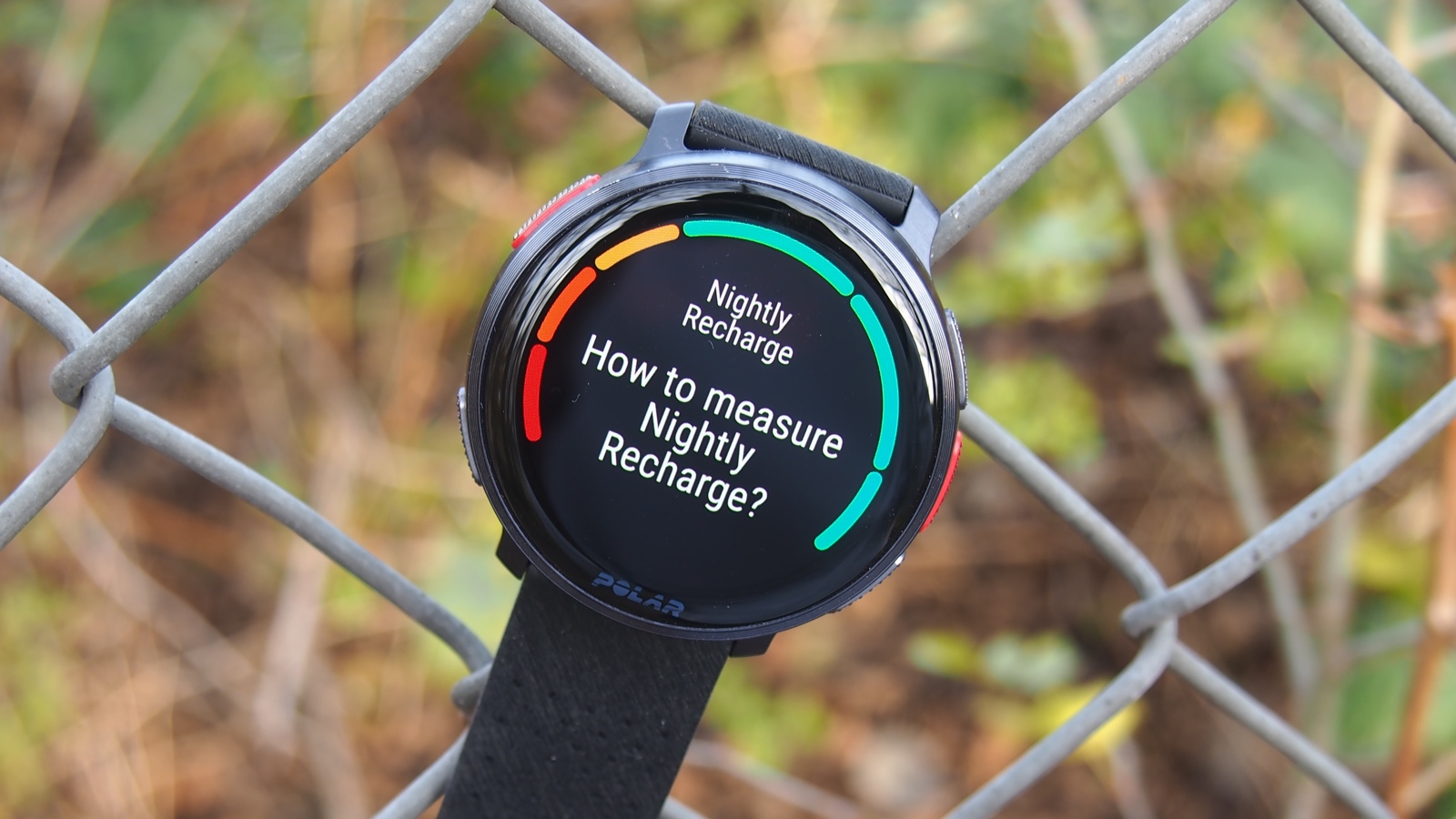
The Vantage V3 will track your steps and nudge when you should stand up and move around for a bit and we've not found any troubling data on the step-tracking side of things.
But its rich bevy of sleep-tracking smarts stands out. Like the V2 you've Nightly Recharge measurements, which aim to better inform your recovery needs. There are also Sleep Plus Stages and SleepWise, which essentially tell you about how sleep has boosted your energy levels.
Wareable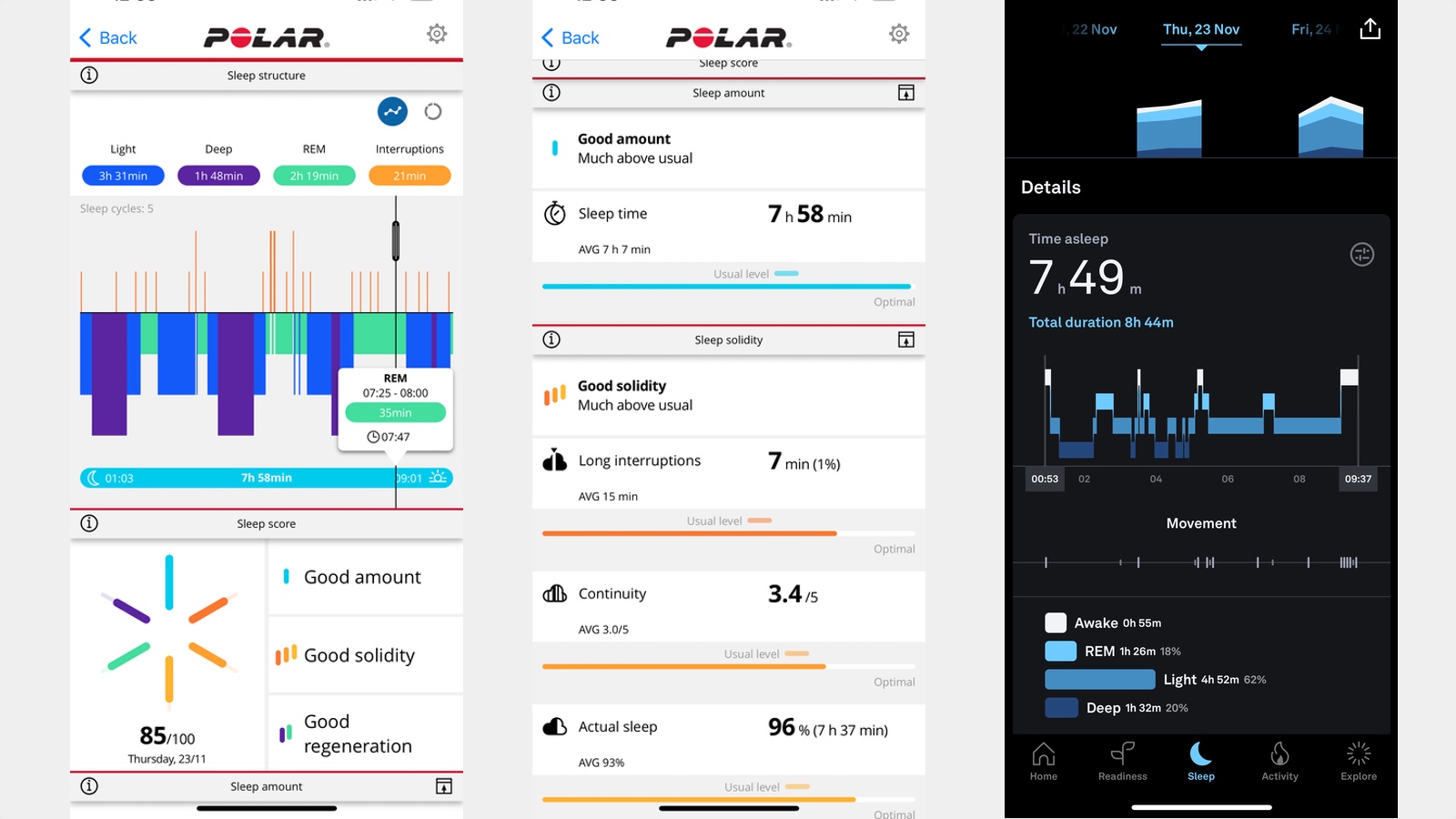
Polar adds nightly skin temperature, which can be used as an indicator that you're not in tip-top shape.
The core sleep tracking on the V3 is very good. We've been using it alongside Oura's Ring Gen 3, which we've found to be a very reliable sleep tracker, and the core data like sleep duration and sleep stages felt nicely in line.
The Nightly Recharge feature is useful too and doesn't seem to drain the battery in the way it did on the V2. When we enjoyed a few alcoholic beverages one evening, our sleep was severely interrupted and my nightly recharge was deemed very poor (screen below).
The only criticism, like much of the Polar experience, is that the presentation is nowhere near as slick or user-friendly, with loads of jargon to churn through.
Polar offers some tips around exercise, regulating energy levels, and sleep to improve matters.
Wareable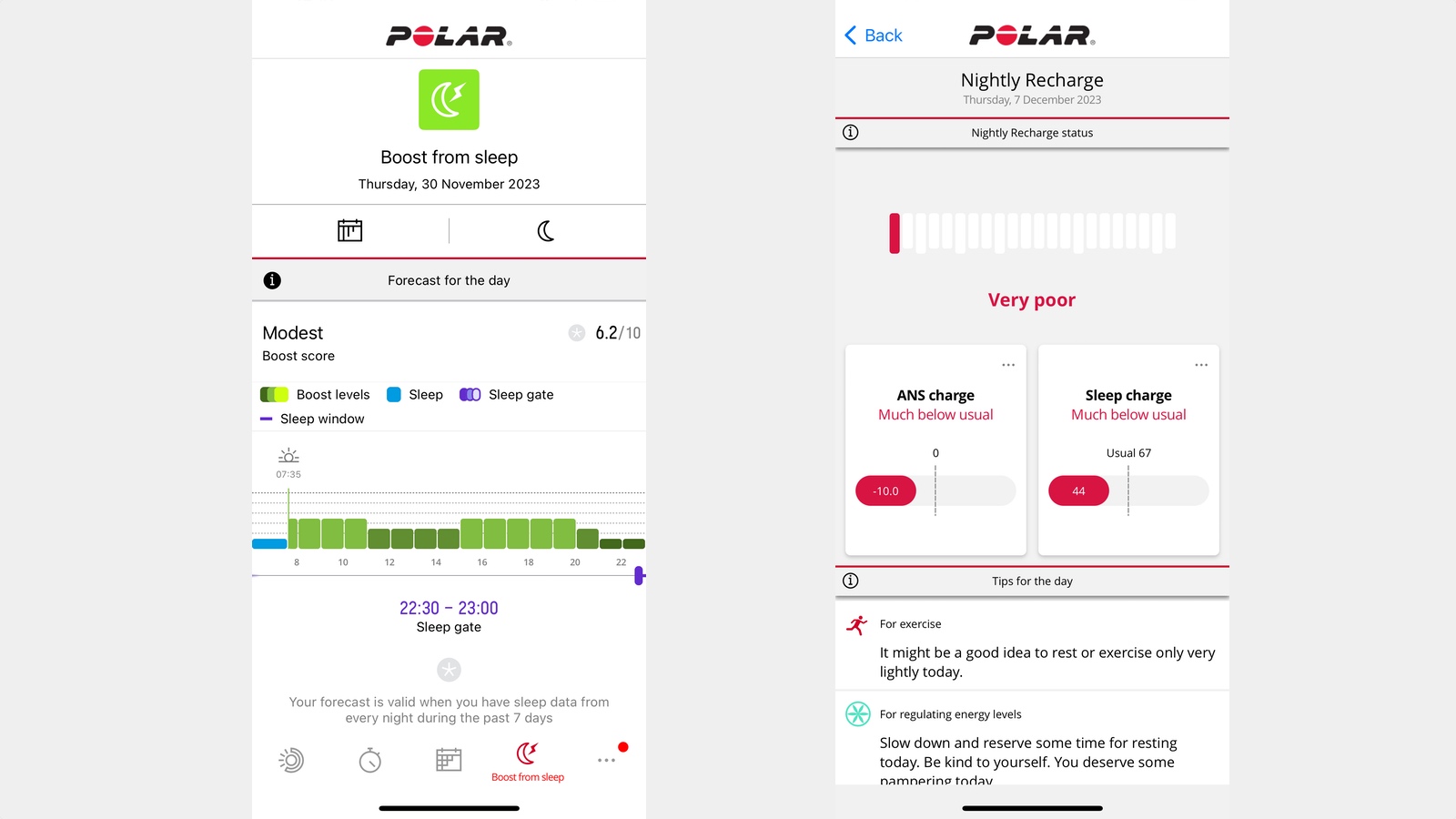
The nightly skin temperature measurements are nicely presented on the watch and you can quite clearly see if it's usual or unusual based on your previous data.
Seeing your Boost from sleep score (out of 10) is presented in a much nicer way on and off the watch and the integration of a sleep gate, essentially a window to make sure you're getting to bed at an appropriate time based on energy levels is adding another useful aspect to Polar's sleep tracking support.
Smart features
Wareable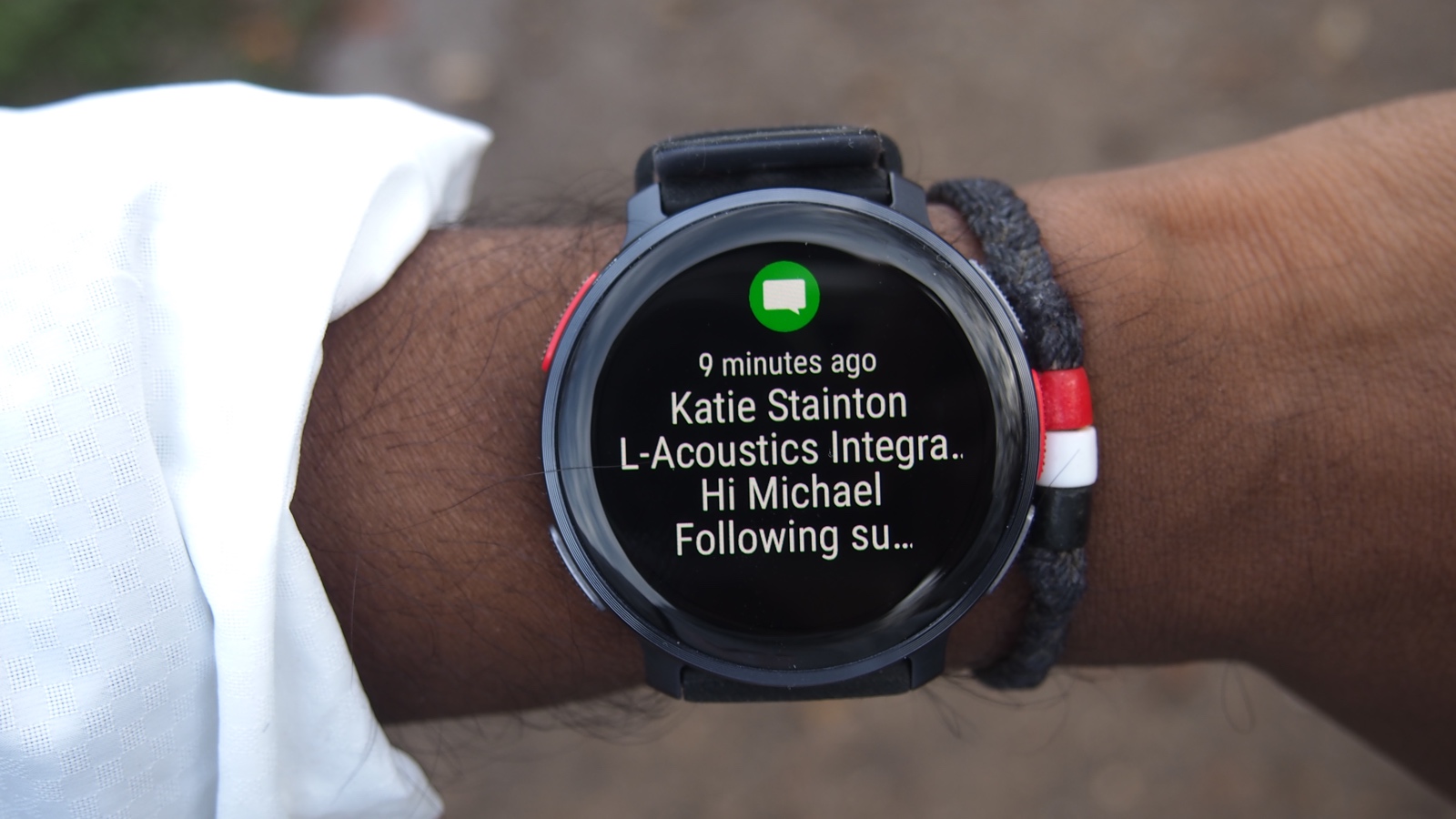
Much like Coros and Suunto, Polar is playing a bit of catch-up when it comes to smartwatch features. This isn’t a watch that can match full-fat smartwatches like the Apple Watch and Samsung Galaxy watch for features like rich notifications, the ability to play music, or letting you pay your way from your wrist instead of your contactless card or phone.
The addition of the AMOLED touchscreen and more notably, the performance boost you get on the V3 over the V2, makes what smartwatch features Polar does offer here more likable than previously.
It’s nicer to read and dismiss notifications, the music playback controls are well-integrated, and the general feel of the user interface is way ahead of the Vantage V2.
Wareable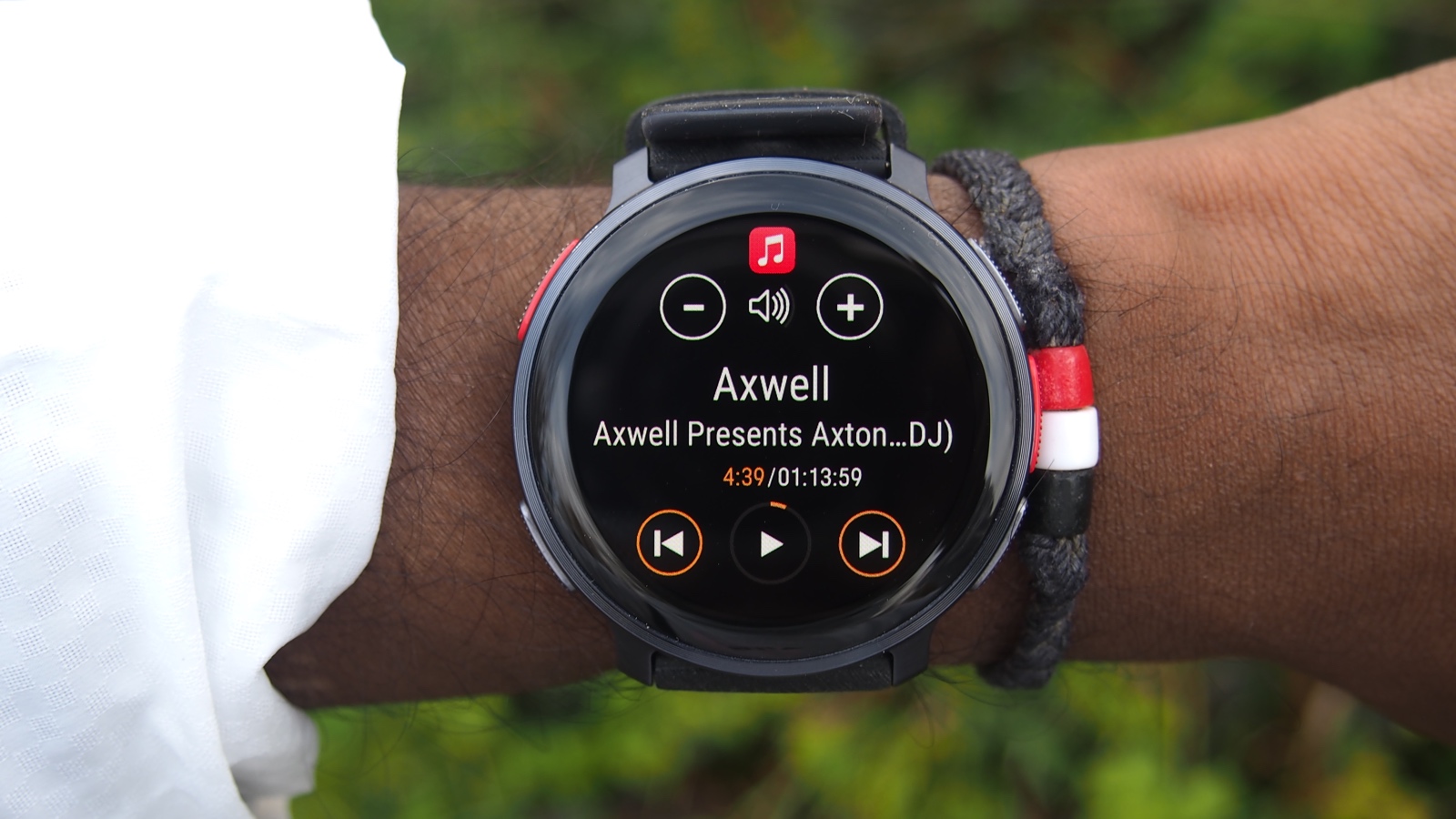
We’ve been using it with an iPhone 14 predominantly and setting up syncing with the Polar Flow app has been generally fine.
We have noticed that the V3 has a quirk of disconnecting from the paired phone regularly. We’re not sure why and why it does that, but it looks like that’s something Polar may need to address.
While the V3 clearly can’t match something like the Garmin Forerunner 965 for features on this front it has made existing features a lot nicer to use and makes having it on outside of tracking more useful than was the case on the Vantage V2.
How we test
